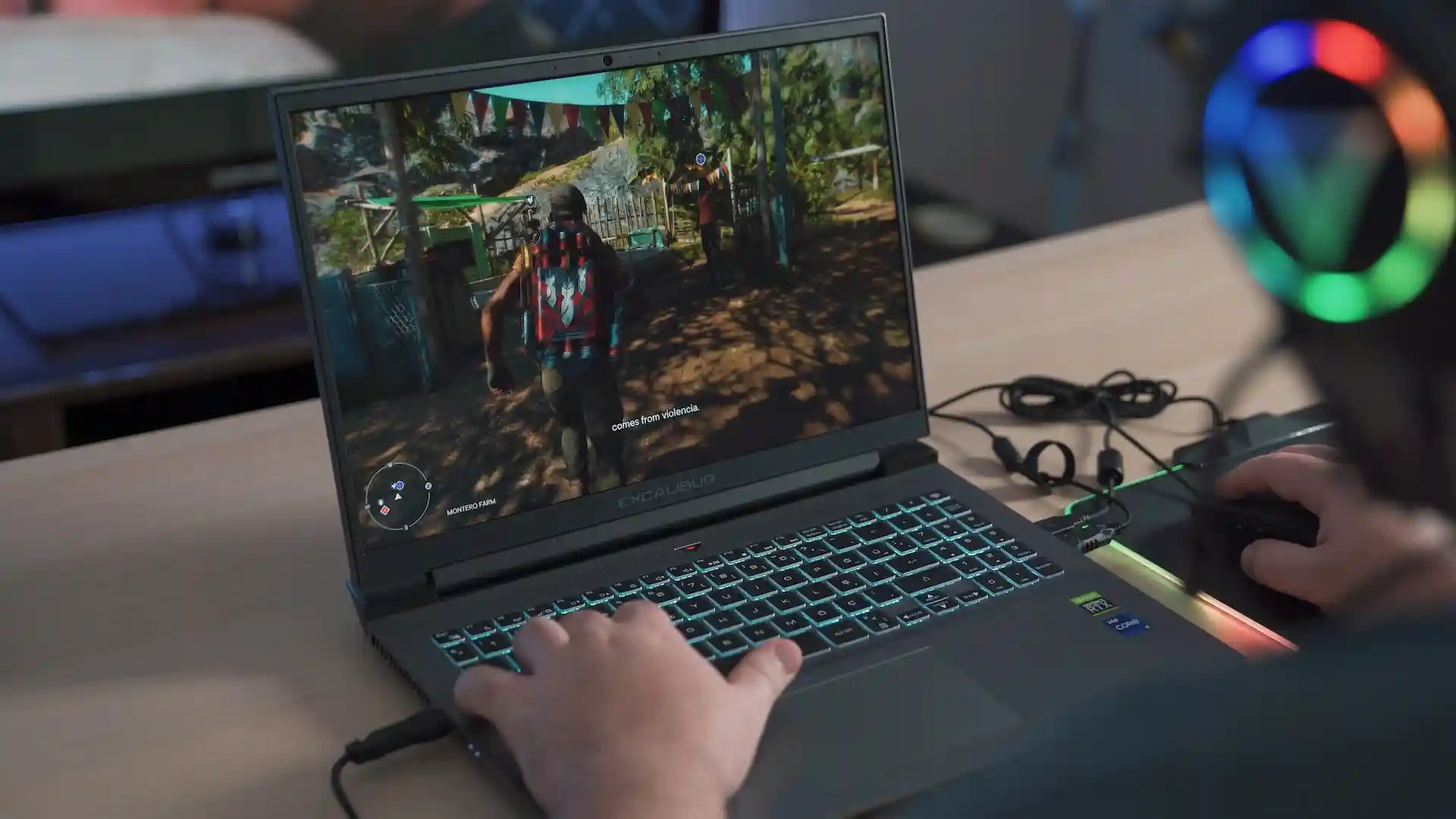Technology
How Modern Testing Equipment is Enhancing Flight Data Accuracy

Data collection from aircraft, such as altitude, velocity, engine performance, and weather conditions, is critical to improving air travel’s environmental and financial impacts. Modern technology has brought about a radical shift in the collection, analysis, and application of flight data.
Not only is the information more accurate when using these sophisticated instruments, but flying is also much safer and more dependable. This blog will examine six major ways that these sophisticated testing devices are revolutionizing the aviation industry by improving flight data accuracy.
High-Precision Sensors
A multitude of sensors that have been painstakingly designed to monitor and record essential flying parameters can be found at the core of virtually every modern aircraft. Through the utilization of cutting-edge technology, these sensors can deliver data in real-time with unmatched accuracy. The advancements in sensor technology have resulted in the creation of sensors that are more compact, more long-lasting, and extremely sensitive.
These sensors can survive the harsh circumstances of flight while still providing accurate measurements. The information that is provided by these sensors serves as the foundation for conducting an all-encompassing analysis of flight data, which in turn makes the navigation and operation of aircraft safer and more efficient.
Advanced-Data Processing Algorithms
The raw data that is collected by sensors is subjected to a complex processing process that makes use of sophisticated algorithms. To improve the overall accuracy of measurements, these algorithms have been painstakingly developed to sort through the data, eliminate noise that is not necessary, correct environmental variables, and filter out any unnecessary noise. Using machine learning and artificial intelligence, these algorithms can rapidly analyze huge datasets, enabling real-time changes and predictive maintenance based on the study of flight data.
In-Flight Monitoring Systems
Modern airplanes are outfitted with onboard monitoring systems that are designed to continuously monitor the functioning of a variety of aircraft systems and components throughout the entirety of the flight. These systems, which are driven by contemporary testing equipment, collect real-time data regarding the engine’s performance, gasoline consumption, hydraulic systems, and other aspects of the vehicle.
Through the examination of this data in real-time, flight crews can spot abnormalities or possible problems rapidly, which enables them to facilitate appropriate intervention and repair, hence maintaining the flight’s safety and reliability.
Remote Sensing Technologies
When it comes to improving the accuracy of flight data, remote sensing technologies, including satellite-based navigation systems and ground-based radar, play a crucial role. Global Navigation Satellite Systems (GNSS) such as GPS offer precise positioning information, which enables accurate navigation and the most efficient planning of routes.
Radar systems that are stationed on the ground painstakingly and accurately track the movements of aircraft, which enables air traffic control to be carried out without any interruptions and increases flight safety rates overall.
Flight Simulation And Testing
A comprehensive testing process that makes use of cutting-edge simulation technologies is carried out on aircraft and their complex systems before they are put into service. Engineers can conduct a full evaluation of the performance of various components under a variety of settings due to these simulations, which meticulously mimic real-world flying scenarios with astonishing precision. Under the process of putting flight systems under simulated stressors, engineers can identify potential areas of weakness or areas that might be improved, hence increasing the overall dependability and accuracy of the system.
Continuous Calibration And Maintenance
The constant calibration and maintenance of onboard sensors and systems is made easier by the sophisticated testing equipment that is available today. It is important to calibrate sensors regularly so that they can maintain their precision and dependability throughout time. For instance, if you’re looking for high-accuracy instruments that measure parameters such as airspeed, altitude, and vertical speed, you can invest in an air data test set.
This equipment simulates various flight conditions, allowing technicians to verify the performance of sensors and instruments before or after maintenance or repair work. In addition, sophisticated diagnostic tools make it possible to perform preventative maintenance, which gives engineers the ability to identify and address potential problems before they jeopardize the accuracy of flight data or the safety of the aircraft.
Conclusion
The introduction of contemporary testing equipment marks a paradigm shift in the aviation sector, which has significantly improved flight data accuracy and reliability. These technical marvels enable aviation stakeholders to utilize accurate flight data to make air travel safer and more efficient.
These marvels range from the deployment of high-precision sensors to the application of advanced data processing algorithms. The aviation sector is prepared to usher in a new era of precision, reliability, and safety by adopting these developments, which will ensure the well-being of both passengers and crew members alike.
Technology
How I Used AI to Earn Passive Income From Crypto & NFTs

In the fast-paced world of crypto and NFTs, automation and smart decision-making are essential. That’s where artificial intelligence comes in. In this article, I’ll share how I used AI to earn passive income through crypto trading bots, NFT analytics tools, and AI-driven staking strategies. Whether you’re a crypto newbie or a seasoned investor, AI can be your ultimate sidekick for building a passive income stream.
Discovering AI Tools in the Crypto Space
My journey started when I realized that keeping up with the volatile crypto market was not only exhausting—it was nearly impossible without help. I came across several AI-powered tools that claimed to automate trading, analyze market trends, and even flip NFTs. Naturally, I was skeptical. But curiosity won, and I decided to test a few.
The first step? Research. I found communities on Reddit, Discord, and Twitter discussing how they were using AI bots to automate trades, stake tokens, and even predict NFT market trends. That’s when I truly understood the potential.
Using AI Trading Bots for Crypto
One of the main ways how I used AI to earn passive income was by integrating AI trading bots into my portfolio. These bots use machine learning to analyze real-time market data and make trades on your behalf.
I started with platforms like 3Commas and Pionex. They allowed me to set up automated trading strategies, like grid trading and dollar-cost averaging. Once configured, these bots executed trades based on predefined rules and AI predictions—no emotional decision-making, no late-night panic selling.
Passive income source #1: Automated trading bots
These bots made small, consistent profits by buying low and selling high—perfect for a volatile market. Within a few months, my crypto portfolio grew steadily without me constantly monitoring charts.
AI-Powered NFT Flipping and Analytics
The NFT space can be chaotic, with new projects launching daily and prices fluctuating wildly. I quickly realized that data-driven decisions were key to identifying profitable NFT opportunities. That’s where AI tools like Nansen, icy.tools, and NFTGo became game changers.
These platforms use AI to analyze on-chain data, wallet movements, social sentiment, and market trends. I used them to identify “smart money” wallets (wallets of successful NFT traders) and followed their moves. The AI algorithms also alerted me when certain projects started gaining traction—before they went viral.
Passive income source #2: NFT flipping with AI insights
By following AI-analyzed wallet activity and mint trends, I managed to buy into promising NFT projects early. Some flips gave me 2x to 5x returns within days.
AI and Crypto Staking Strategies
Another way how I used AI to earn passive income was by optimizing staking and yield farming. While staking itself is passive, choosing the right tokens and platforms is crucial. I found AI tools like DeFi Llama and Yieldwatch incredibly useful.
These tools used predictive modeling to identify the highest APYs and safest protocols. They also tracked rug-pull risks and smart contract health—something a human investor might miss. Based on this data, I staked tokens like ETH 2.0, ATOM, and SOL on various platforms.
Passive income source #3: Smart staking and yield farming
By using AI-driven recommendations, I maximized my staking returns while minimizing risk. The result? A steady stream of crypto rewards hitting my wallet monthly.
Risks and Lessons Learned
While AI gave me a huge edge, it wasn’t all smooth sailing. Sometimes the market moved too fast for bots to react. Other times, NFT hype cycles died overnight. The key lesson? AI is a tool—not a crystal ball.
Here’s what I learned:
- Always combine AI insights with your own research.
- Don’t over-leverage. Set realistic goals.
- Diversify across bots, NFTs, and staking.
- Monitor your strategies, even if they’re automated.
The Future of AI in Passive Crypto Income
Looking ahead, AI will only become more advanced and accessible. We’re already seeing GPT-style models analyze blockchain data, and AI DAOs (decentralized autonomous organizations) that manage assets without human input.
If you’re wondering how I used AI to earn passive income, remember—it’s not about replacing your brain, but enhancing your decision-making. AI helps you work smarter, not harder.
Final Thoughts
AI has completely transformed how I approach investing in crypto and NFTs. What once felt like gambling now feels like strategy. By using bots, analytics, and AI-powered platforms, I’ve turned my side hustle into a steady stream of passive income.
Whether you’re trading coins, flipping JPEGs, or staking tokens—AI can be your secret weapon. Just be smart, do your research, and let the data lead.
So if you’re asking yourself how do I get started?—start small, pick one tool, and see what happens. That’s how I used AI to earn passive income, and you can too.
Technology
8 Influential Companies in AI Investments for 2025

In 2024, artificial intelligence (AI) reached an inflection point. Before 2024, AI could mostly recognise patterns and generate text (like writing an article or answering questions). But now, AI can think in a more advanced way and solve complex problems.
Such an upgrade has happened due to investments made by some major companies. They are leading the way in AI advancements and performing different roles. For example, some are making hardware (NVIDIA, AMD), some are providing cloud services (Microsoft, Amazon), and some are focusing on AI research and data (Google, OpenAI, IBM, Palantir).
In this article, let’s check out eight influential companies heavily investing in the AI sector.
1. NVIDIA (NVDA) – The AI hardware king
NVIDIA makes powerful computer chips (GPUs). These chips allow AI systems to learn and improve responses. Almost every company that builds AI needs NVIDIA’s chips.
Because of this, NVIDIA’s stock price has also surged in the past few years. Also, the company is investing in new AI startups to make even better technology.
2. Microsoft (MSFT) – The AI cloud giant
By the end of 2025, Microsoft is expected to invest about USD 80 billion (Rs. 6.93 lakh crores) in AI data centres. For the unaware, these data centres allow AI to work better and faster. They have a cloud service called Azure, which companies use to run AI programs.
Microsoft also works with OpenAI (the company behind ChatGPT) and is adding AI to its popular software like Word, Excel, and Teams. This is making Microsoft one of the most influential companies in AI.
3. Alphabet (GOOGL) – The AI master
For the unaware, Alphabet is the company that owns Google. They have been using AI for a long time which helps Google in:
- Making search results better
- Improving YouTube recommendations
- Creating smart assistants like Google Assistant
They also build special AI computer chips and have their own AI models, like Gemini. Due to the large volume of data possessed by Google, it is making AI smarter and better.
4. Amazon (AMZN) – AI in shopping and cloud
Amazon uses AI in two big ways:
- First, AI is helping the company improve shopping by recommending products to customers and making faster deliveries.
- Second, Amazon Web Services (AWS) is one of the biggest cloud computing platforms. Companies use it to run their AI applications.
However, recently, Amazon has faced AI capacity constraints despite significant investments. Currently, they are working to enhance AWS with AI and custom chips, but hardware delays and electricity shortages are creating hurdles.
5. OpenAI – The AI research leader
OpenAI is a company that focuses completely on ideating and developing AI models that can write, create images, and even help in coding. They created their flagship product, ChatGPT, which reached 10 lakh users in just five days after its launch on November 30, 2022.
OpenAI is a fast-growing organisation and is currently planning to become a public company by launching its first-ever IPO. They are also working on major projects, like “Stargate,” which could make AI even more powerful.
6. Palantir Technologies (PLTR) – AI for data and security
Palantir focuses on analysing huge amounts of data. They make sense of complex information and primarily help governments and military agencies. By investing in AI technologies, the company finds patterns in data that humans might miss. Due to the increased usage of AI for security and defence, Palantir is in a good position to grow in future.
7. Advanced Micro Devices (AMD) – The AI chip challenger
AMD is a company that makes computer chips, just like NVIDIA. While NVIDIA is the leader, AMD is catching up fast and building its own AI-focused chips.
Since AI needs powerful hardware to run, AMD ensures that companies have alternatives to NVIDIA’s chips. They are expected to increase revenue in the future as more people and companies buy AI chips.
8. IBM (IBM) – The AI advisor for businesses
IBM helps other companies use AI. Instead of making AI for regular people, IBM focuses on AI for businesses. They provide tools like Watson (their AI system) that allow companies to enhance productivity through automation.
IBM also lets banks, NBFCs, and healthcare providers use AI to improve their work efficiency.
Conclusion
In 2024, the total value of the global AI market was $214 billion and by 2030, it is expected to grow to $863.79 billion. Also, the market is expected to grow at an average annual growth rate of 32.19% from 2025 to 2030.
This astonishing growth rate is achieved because of these eight influential companies:
- NVIDIA and AMD are making powerful chips that help AI work faster.
- Microsoft, Amazon, and Google are providing cloud services to run AI smoothly.
- OpenAI is researching and developing advanced AI models.
- IBM and Palantir focus on AI for businesses and security.
Additionally, AI is also transforming online marketplaces. It is making shopping easier with better recommendations and automated customer support. In the coming years, AI will play an even bigger role in everyday life and will make businesses smarter!
Technology
Personalized Zoom Backgrounds to Stand Out in Meetings

In today’s digital landscape, virtual meetings are the new normal. From team check-ins to client presentations, your on-screen presence matters. A personalized office background for Zoom is one of the simplest ways to elevate your professionalism and help you stand out during video calls. A well-crafted background reflects your brand, personality, and professionalism, ensuring you leave a lasting impression.
Custom Designs for a Unique Touch
A custom background goes beyond aesthetics—it reflects your unique style and communicates your attention to detail. Whether you prefer sleek, minimalist layouts or vibrant, creative visuals, a personalized background will ensure you’re memorable for all the right reasons.
For inspiration, browse through Zoom background office options designed to suit various industries and meeting styles. From professional co-working spaces to creative studio setups, having a distinctive background can help you communicate your professionalism while remaining visually engaging.
Custom backgrounds are especially helpful for those working in creative or client-facing roles, as they can subtly incorporate branding elements, company logos, or even motivational quotes relevant to your field.
How Colors Impact Your Presence
The colors you choose for your virtual background play a crucial role in shaping how others perceive you during meetings. Different colors convey different emotions:
- Blues are calming and convey trustworthiness—ideal for corporate professionals.
- Greens evoke balance and clarity, perfect for educators and consultants.
- Reds and oranges are bold and energizing, suitable for creative industries or marketing professionals.
Choosing a background color that complements your clothing can enhance your appearance on screen, making your presence more cohesive and polished.
For those who use Microsoft Teams, custom Teams background images can ensure visual consistency across different platforms while offering a professional and visually appealing experience.
Make Every Meeting Count
Your virtual background is more than just a backdrop—it’s an extension of your brand and professionalism. Whether you’re aiming for minimalism or bold creativity, the right office background for Zoom helps you project confidence and competence in every meeting.
Invest in a personalized background to make your next video call stand out, reflect your unique style, and create a polished, lasting impression in every interaction.
-

 Travel1 year ago
Travel1 year agoOnboardicafe.com Login Exploring the Delights of Onboardicafe
-

 Food & Recipes1 year ago
Food & Recipes1 year agoFive Food Products You Must Avoid Giving to Your Infant
-

 Sports1 year ago
Sports1 year agoThe Most Popular Sports In The World
-

 Technology5 months ago
Technology5 months agoSustainable Practices in Video Production: Reducing the Carbon Footprint
-

 Sports10 months ago
Sports10 months agoSmart Solutions for Football Field Maintenance
-

 Health & Fitness11 months ago
Health & Fitness11 months agoSuboxone Tooth Decay Lawsuits and the Pursuit of Justice Against Indivior
-

 Entertainment1 year ago
Entertainment1 year agoNavigating the Web: The Ultimate List of Tamilrockers Proxy Alternatives
-

 Sports10 months ago
Sports10 months agoWearable Tech and the Future of Football










